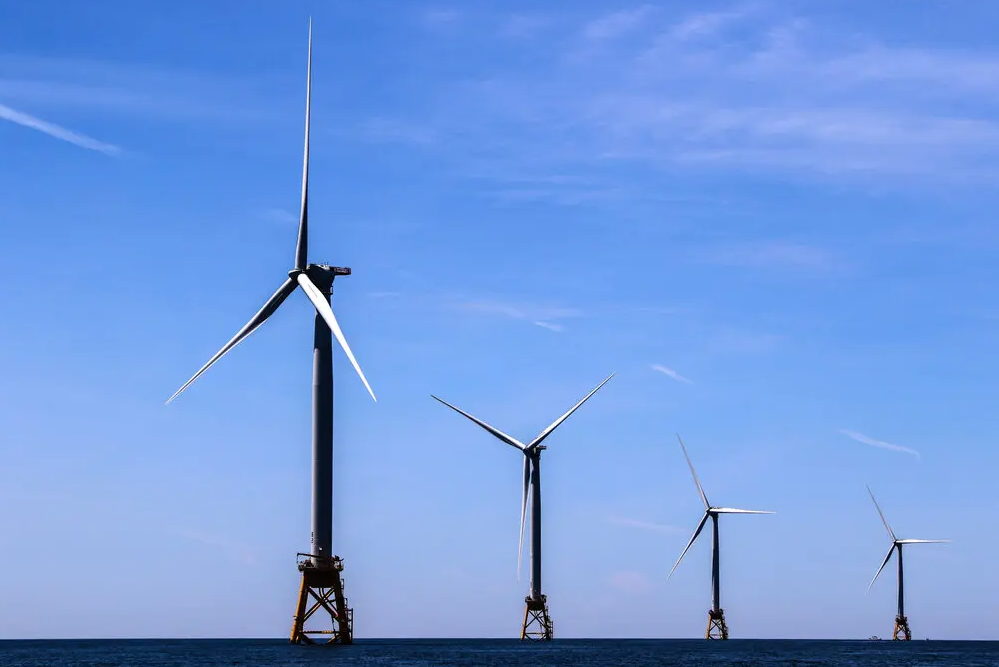
By DANA TIMS/YachatsNews.com
Federal energy representatives are likely to get an earful at a meeting Wednesday in Newport intended to gather public comments about plans to build towering wind-energy farms off the Oregon coast.
The four-hour meeting will begin at 8 a.m. at the Best Western Agate Beach hotel in Newport. It is sponsored by the Midwater Trawlers Cooperative and the U.S. Bureau of Ocean Energy Management, which is spearheading the wind-farm leasing process.
A growing number of cities, ports, tribes and other interests have already passed resolutions asking that the Biden Administration’s fast-tracked process be slowed to provide more time to study the proposal’s economic and environmental impacts.
Those resolutions came in response to the announcement in March that BOEM has identified three areas in waters off the southern Oregon coast where the first leases are expected to be approved.

Those so-called “call” areas total nearly 2,200 square miles of ocean from Coos Bay south to Brookings and represent the spots where analyses show some of the steadiest and strongest winds on the planet.
The Biden administration is hoping to create 30 gigawatts of electricity-generating capacity through offshore wind by 2030. It’s already approved large projects off the coasts of Massachusetts and New York.
And while the first leases to private power developers could be auctioned off as early as next year, those involved in the process caution that years of site assessments and surveys, along with technical assessments and permitting, mean the first turbines – which are likely to be situated at least 20 miles from land – won’t start turning for about a decade or so.
But with a federal process in place that could auction off the first leases as early as next year, groups up and down the coast are asking for additional time to consider total potential impacts of the plan.
“After the announcement of the current proposed call areas, we immediately began hearing from constituents within our coastal legislative districts with concerns,” seven Oregon legislators whose districts span the coast wrote in a recent letter to BOEM.
The legislative Coastal Caucus added in its letter, “While wind energy fits in the state’s goal of moving toward a more renewable future for Oregon, steps must be taken to ensure that existing ocean users and our coastal communities are prioritized.”
The Port of Toledo and the Newport City Council recently passed similar resolutions addressing the project’s speedy timeframe. The Port of Toledo and the Toledo City Council are expected to follow suit soon.
“We are not saying no to wind forever,” said Heather Mann, executive director of the Newport-based Midwater Trawlers Cooperative. “But we are saying that this isn’t the way to move forward.”
All comments made at Wednesday’s meeting will be transcribed and included in the federal register’s official record. The meeting comes less than two weeks before the June 28 deadline to weigh in on Oregon’s proposed call areas.

Underway on East Coast
After fits and starts over the last 10 years, offshore wind farm development has moved into high gear along the East Coast. The first commercial scale project near Block Island in Rhode Island waters has been operational since 2016 with five turbines. Projects nearing the construction phase offshore of Maryland, Delaware, Rhode Island, Connecticut and New York are poised to put 15 to 30 turbines each in waters around 20 miles offshore.
In October, the Biden administration announced plans to develop large-scale wind farms along nearly the entire coastline of the United States, the first long-term strategy from the government to produce electricity from offshore turbines.
Interior Secretary Deb Haaland said the agency will begin to identify, demarcate and hope to eventually lease federal waters in the Gulf of Mexico, Gulf of Maine and off the coasts of the Mid-Atlantic States, North Carolina and South Carolina, California and Oregon, to wind power developers by 2025.
The announcement came months after the federal government approved the nation’s first major commercial offshore wind farm off the coast of Martha’s Vineyard in Massachusetts and began reviewing a dozen other potential offshore wind projects along the East Coast. On the West Coast, the administration has approved opening up two areas off the shores of central and northern California for commercial wind power development.
- Dana Tims is an Oregon freelance writer who contributes regularly to YachatsNews.com. He can be reached at DanaTims24@gmail.com



